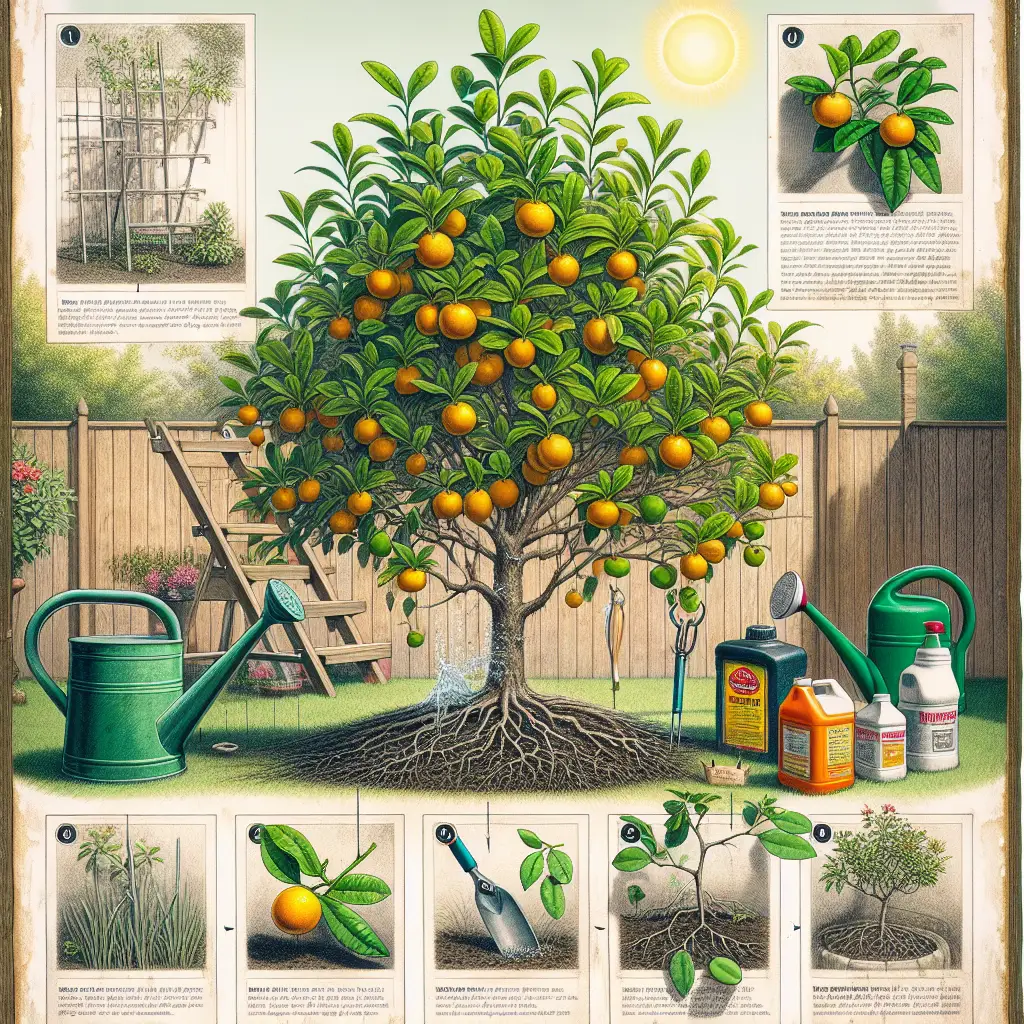Title: How to Save a Dying Kumquat Tree
Introduction:
Gardeners often pride themselves on their green thumbs, but even the most diligent plant parents can face the heartbreak of a dying kumquat tree. Fear not, for despair is not the only option. In this comprehensive guide, we’ll explore the signs of distress in kumquat trees, delve into the probable causes, and provide a step-by-step rescue plan to restore the health and vibrancy of your precious citrus gem.
Understanding the Distress Signals:
Before diving into the rescue operations, it’s crucial to recognize the red flags indicating that your kumquat tree is in trouble. Look out for symptoms like yellowing or dropping leaves, stunted growth, or a lack of fruit production. These signs can be your first clue that intervention is needed. [1]
Section 1: Assessing the Situation
The first step in salvaging your kumquat tree is thoroughly assessing its condition. Start by examining the tree’s environment. Kumquat trees thrive in well-draining soil and full sunlight [2]. Check the soil moisture—overwatering or poor drainage can lead to root rot, which is often a common culprit behind a tree’s decline.
Key Inspection Points:
– Soil quality and moisture level
– Sunlight exposure
– Signs of pests or diseases
Section 2: Corrective Measures
Once you’ve pinpointed the potential issues, it’s time to take corrective action. If overwatering is the issue, reduce your watering schedule and consider improving soil drainage. This may involve repotting the tree with a well-draining potting mix specifically designed for citrus trees, such as Miracle-Gro Citrus Potting Mix (affiliate link). [3]
On the flip side, under-watered trees will need a more consistent watering routine. Kumquat trees should be watered deeply but infrequently, allowing the soil to dry slightly between waterings.
Section 3: Nutrient Management
Nutrition is key to a kumquat tree’s recovery. Citrus trees are heavy feeders and require a balanced diet of nitrogen, phosphorus, potassium, and micronutrients. A lack of any essential nutrient can impede growth and fruit production. A high-quality citrus fertilizer, like Espoma Citrus-tone Plant Food (affiliate link), can provide the necessary nutrients and encourage healthy growth. [4]
Application tips:
– Follow the manufacturer’s instructions for the appropriate dosage.
– Apply fertilizer during the tree’s active growth periods, typically in early spring and summer.
Section 4: Disease and Pest Control
Diseases and pests wreak havoc on kumquat trees, often leading to their demise. Common issues include citrus canker, scale insects, and aphids. These problems require prompt attention and appropriate treatment methods. For organic pest control solutions, consider neem oil or insecticidal soaps, which are effective against a variety of common citrus pests. [5]
When dealing with fungal diseases, removing affected foliage and applying a fungicidal spray can help manage the spread. Remember that preventing disease often comes down to proper cultural practices, such as avoiding overhead watering and ensuring proper air circulation.
Prevention tips:
– Regularly inspect your tree for signs of pests and diseases.
– Maintain a clean growing area by removing fallen debris and leaves.
Section 5: Pruning and Maintenance
Pruning is an essential aspect of rejuvenating a dying kumquat tree. By removing dead or diseased branches, you promote air circulation and reduce the risk of further infection. It also helps the tree direct its energy towards healthy growth. When pruning, always use clean, sharp tools to make precise cuts.
Pruning guidelines:
– Prune in late winter or early spring before the tree’s growth cycle begins.
– Remove only dead, diseased, or crossing branches to maintain the tree’s structure.
Conclusion:
Rescuing a dying kumquat tree may seem daunting, but with careful observation and targeted action, it is entirely possible. By addressing environmental factors, managing nutrients, controlling pests and diseases, and maintaining proper pruning practices, you can breathe new life into your tree.
Remember that the key to successful gardening is patience and persistence. With time and dedication, your kumquat tree can recover from the brink and once again become a vibrant part of your garden landscape. Keep an eye out for new growth and blossoms, as they are the best indicators that your efforts have been successful.
For more gardening insights and to troubleshoot other plant-related concerns, be sure to subscribe to our newsletter and join our vibrant community of gardening enthusiasts.
[1] University of Florida IFAS Extension. “Kumquat Growing in the Florida Home Landscape.” https://edis.ifas.ufl.edu/publication/CH242
[2] University of California, Agriculture and Natural Resources. “Citrus: Safe and Delicious Fruits.” http://ipm.ucanr.edu/PMG/GARDEN/FRUIT/citrus.html
[3] Miracle-Gro. “Citrus Potting Mix.” https://www.miraclegro.com/en-us/products/soils-amendments/miracle-gro-citrus-potting-mix
[4] Espoma. “Citrus-tone Plant Food.” https://www.espoma.com/product/citrus-tone/
[5] National Pesticide Information Center. “Neem Oil.” http://npic.orst.edu/factsheets/neemgen.html

